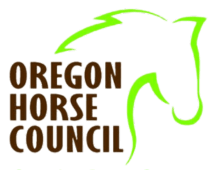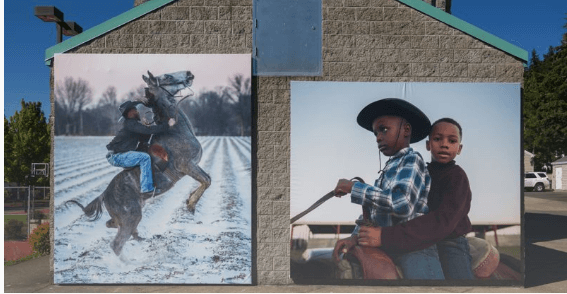COURTESY PHOTO: ARTS COUNCIL OF LAKE OSWEGO – Photographer Rory Doyle has two large images in the Gallery Without Walls program located at the Westlake Firestation.
Photographer Rory Doyle set out in 2017 to document the Delta Hill Riders — a subculture of Black cowboys and cowgirls in the Mississippi Delta who have been largely overlooked in American history — after seeing the riders in his town’s annual Christmas parade.
He jumped into the parade, he said, and asked to photograph the riders with a documentary style. They allowed him to photograph a Black heritage rodeo in January 2018.
“That’s really when things started,” Doyle said. “I started meeting people.”
A few key folks introduced him to local riders with long-established traditions, and Doyle said the project took off organically.
Through a series of photos taken from 2017-19, Doyle photographed their way of life and what it means to be a cowboy or cowgirl in that region.
Lake Oswego community members can view two large-scale photos from Doyle’s collection outside the Westlake fire station for the next two years as part of the Arts Council of Lake Oswego (ACLO) Gallery Without Walls rotating exhibit. There will also be a photo exhibition of Doyle’s work inside the ACLO’s new brick-and-mortar spot, 41 B St., from Oct. 3 through Nov. 13.
“I’m grateful to the arts council for showing interest in these Mississippi stories,” said Doyle, who hails from Cleveland, Mississippi. “A lot of times people in Mississippi feel overlooked in general in terms of the national narrative, so it’s an honor to be able to share the work in a place far, far from Mississippi.”
He photographed Delta Hill Riders in their homes to get a sense of what it means to be cowboy or cowgirl in a rural setting. He added that almost everyone he met was not a working cowboy like those who typify the west. Rather, the Delta Hill Riders are much more about recreation, community, family and camaraderie, he said.
“They wear the hats and the boots — the western identity looks similar to something you’d see on the west coast,” Doyle said.
Doyle said the project piqued his interest especially after learning about the diversity among cowgirls and cowboys, which is not necessarily portrayed accurately in modern culture through Hollywood films.
Doyle said the project is ongoing but that he has taken a hiatus due to the COVID-19 pandemic.
“The archive is quite extensive,” he said. “The goal of the project is to photograph beyond the obvious moments.”
The exhibition on display at the ACLO will consist of 40 images, though none of the images were taken after 2019.
The ACLO is following social distancing guidelines and safety protocols for those who wish to view the exhibition in person. The photos will also be posted online on the ACLO’s website.
The ACLO is also trying to augment the Gallery Without Walls program, which typically draws in sculpture artists.
“This was one of the ways that we have been trying to expand how we present the collection and (think about) ‘What kinds of media can we use?'” said ACLO Executive Director Nicole Nathan. “That’s the beauty of the Gallery Without Walls two-year program, is that we can experiment with that and just to widen our view of what is public art.”
Nathan added the group has been working with the fire department to have more artwork near its facilities, and that Westlake provided a good space for the photographs.
“It was just a really great place to showcase this different media we were looking to include,” said Nathan, adding that the artwork added great synergy to the area. “The subject matter is really interesting, not only because of what it is and how Rory presents it — they’re beautiful photographs.”
Nathan said since the artwork was put up, the ACLO has heard some concerns from citizens asking questions about the art and if it’s a political statement.
“That was one of the questions we really wanted to address: that it’s not. It just happens to be a different kind of artwork, a different media that we’re able to represent,” Nathan said. “Also, there’s this tie … there’s [an] incredible horse culture around this area.”
Doyle said he did not intentionally mean to link this project with the Black Lives Matter movement, which he does support. He said photographing Black cowboys and cowgirls was more about documenting the stories locally that have long been overlooked.
“This is a project that celebrates the stories of rural Mississippi, while looking at a greater history of cowboy culture that has long been misrepresented,” Doyle said. “This is made possible by the people in the photos who so graciously allowed me to enter their lives and photograph them.”
For more information about Doyle and his project, visit his website.
“I hope people find a connection to the photos and feel a connection to the people who have practiced these proud traditions for so long,” Doyle said.
Author: Clara Howell, Lake Oswego Review

The Oregon Horse Council is a 501(c)(6) nonprofit that works to strengthen, connect, and represent Oregon’s equine industry.

